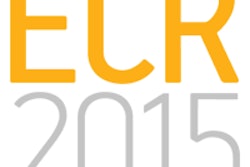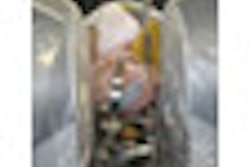
CHICAGO - Even patients over the age of 80 can successfully and safely undergo image-guided biopsy procedures, study results suggest.
Their complication rate appears to be about the same as for individuals younger than 80 who undergo the procedure, according to hospitals records reviewed by researchers from the Mayo Clinic in Rochester, MN.
"Image-guided biopsy in elderly patients is a safe and accurate procedure," said Brian Welch, a medical student at the Mayo School of Medicine, in a presentation at the 2008 RSNA meeting.
 |
| Brian Welch from the Mayo School of Medicine. |
In the retrospective analysis, Welch and his co-authors, including his father, Dr. Timothy Welch, a radiology consultant at the Mayo Clinic, identified 722 patients over the age of 80 who underwent image-guided biopsy procedures from 2002 to 2007.
Welch said 33 of the patients were lost to follow-up. However, charts were available for 616 patients, who were assessed for possible malignancies, and for 73 patients who were assessed for other renal or liver diseases. The patients in the target group ranged in age from 80 to 96 years. About 57% of the patients underwent CT-guided biopsy and 43% underwent ultrasound-guided biopsy.
When compared with the remaining 13,012 patients in the Mayo database who were 79 years of age or younger, Welch found that the accuracy rate was 95% among the elderly patients, compared with 96.5% for the younger patients.
That small difference did achieve statistical significance (p = 0.02), but Welch suggested that the difference might have to do with the procedure type rather than age. The difference in accuracy might have resulted from differences in procedures in which accuracy is more difficult to obtain, he said.
Welch noted there were more lung biopsies (17%) in the elderly patients, compared with 7% among younger patients, and more tests for lymphomas and sarcomas (23%) in the elderly, compared with 11% for younger patients. Biopsies for those conditions are considered more likely to have errors.
When he scrutinized complication rates, there were no significant differences:
- Bleeding was observed in 1.5% of the elderly patients, compared with 1.4% of the younger patients.
- Bleeding requiring transfusion was seen in 0.4% of the elderly patients, compared with 0.35% of the younger patients.
- Pulmonary complications among those undergoing lung biopsies were observed in 15% of the elderly patients, compared with 12% of the younger patients.
Welch noted that the results obtained from the biopsies were used to guide therapy less often among elderly patients than among the younger patients. The biopsy results led to treatment in the elderly patients about 58% of the time, while in the younger group the biopsy led to therapy decisions in more than 90% of the cases.
He said that quality of life issues in an already shortened life expectancy and chances of treatment efficacy were likely reasons for lack of utilization of the biopsy findings in the older population.
 |
| Dr. Albert Nemcek from Northwestern University. |
"There is likely some bias here because patients who are too decrepit to survive a biopsy without complications are also unlikely to be candidates for definitive treatment for liver or kidney cancer," he said.
By Edward Susman
AuntMinnie.com contributing writer
December 8, 2008
Related Reading
Image-guided biopsy may help avoid nephrectomy, May 4, 2006
Copyright © 2008 AuntMinnie.com



















